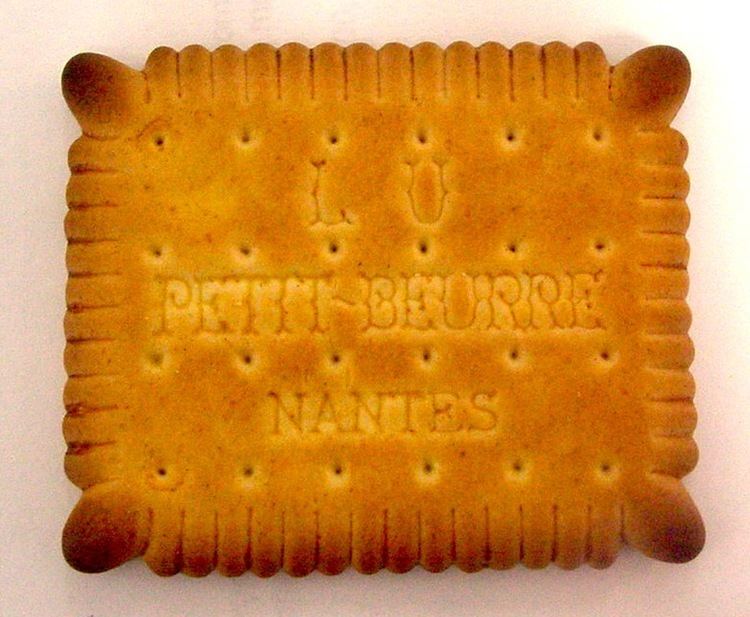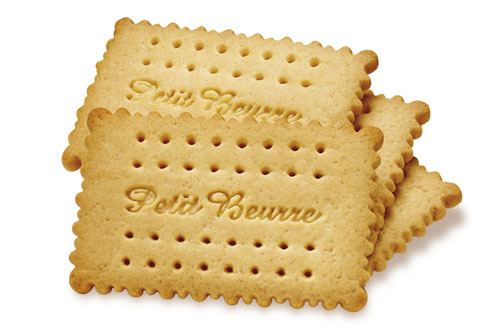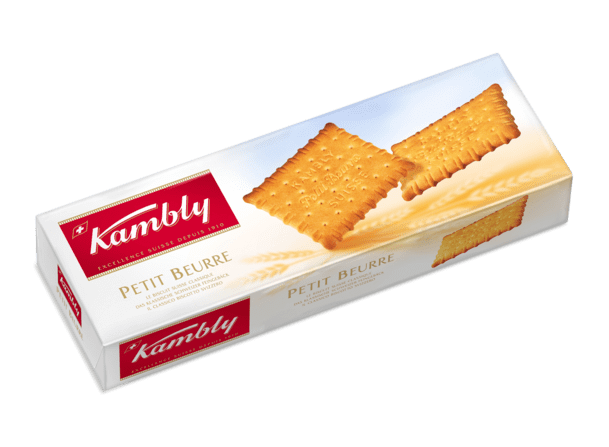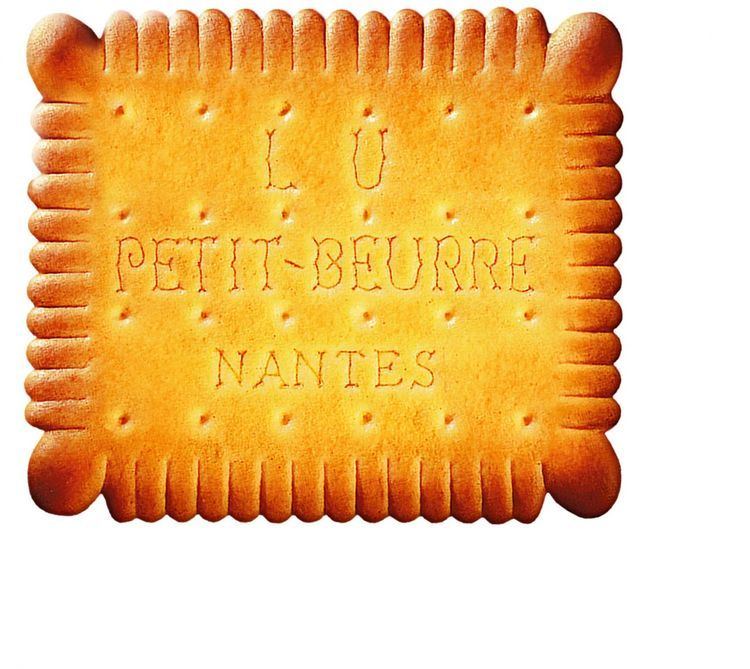 | ||
Similar Sablé, Speculaas, Chocolate salami, Petit Gâteau, Verrine | ||
Petit beurre cake recipe
The "Petit Beurre", or "Véritable Petit Beurre", also known under the initials "VPB", is a kind of shortbread from Nantes, that is best known in France. It is the Petit Beurre of the LU society, which has become a success worldwide. The dry cake was invented in 1886 by Louis Lefèvre-Utile in the city of Nantes and was inspired by some English productions at the time. But the Petit Beurre of LU is not the first to appear, also LU does not have the exclusivity of the name1.
Contents
- Petit beurre cake recipe
- D fi manger 4 petit beurre en moins d une minute on n est pas que des cobayes cobayesf5
- Le Petit Beurre LU
- Characteristics
- Fabrication
- Decoration
- Publicity
- Ingredients and Nutrition
- Other Petits Beurre
- References

The substantive Petit Beurre is a generic term from the past; it has a hyphen and when it is plural Petit-beurre is often misspelled. It is known in Anglo-Saxon countries as the French Petit Beurre and is called "Petibör" in Turkey.

D fi manger 4 petit beurre en moins d une minute on n est pas que des cobayes cobayesf5
Le Petit Beurre LU

Le Petit Beurre LU was invented by Louis Lefèvre-Utile in 1886. A cookie cutter in the form of Petit Beurre was made on September 8, 1886. But Louis Lefèvre did not file the trademark "Petit Beurre LU" until April 9, 1888 to the Nantes Commercial Courts.
Characteristics

They measure 65 mm long, 54 mm wide, and 6.5 mm thick for a unit weight of 8.33 g. The surface of the biscuit is smooth and has twenty-four indents (four lines with six columns) intermixed with the inscription "LU PETIT-BEURRE NANTES" in three lines. The characters of the writing are intended to be a reminder of the writing books that the grandmother of one of the creators of Le Petit Beurre would read. The biscuit is watered with milk before baking to get a "homemade" look. The thickness of 8 biscuits is equal to the width, which allows a square packaging.
Fabrication

At its plant in La Haie-Fouassière, about twenty kilometers south of Nantes, LU produces over 9,000 tons of VPB a year, about 1 billion biscuits packaged in 41 million packs of VPB.
Decoration
Le Petit Beurre LU is decorated with four corners in the shape of ears, fourteen teeth in length, ten teeth in width or fifty-two teeth in total, and presents twenty-four indents in four lines of six. These numbers could be interpreted: the four seasons, the fifty-two weeks of the year, or the twenty-four hours in a day.
Publicity
This is one of the most famous slogans of Petit Beurre : “Four ears and forty eight teeth.”
Ingredients and Nutrition
According to the maker, le Petit Beurre LU contains:
Always according to the same source, the nutritional intake are the following:
Other Petits Beurre
When designing the Petit Beurre, Louis Lefèvre-Utile was quickly copied by his competitors. He then set up a rather virulent advertising company in which he renamed his biscuit the "Véritable Petit Beurre" or "True Petit Beurre". After many years, he manages to impose the basic recipe, without chemical additives, reducing the number of competitors.
Another sweet butter biscuit produced in France is known as the "Petit beurre with Lorient sea salt.”
In 1891, at Hanover in Germany, the Bahlsen company began making a Butterkeks (butter biscuit very similar to the French Petit Beurre) called Leibniz-Keks in homage to the philosopher and mathematician Gottfried Wilhelm von Leibniz. Today many other companies throughout the world make similar biscuits.
